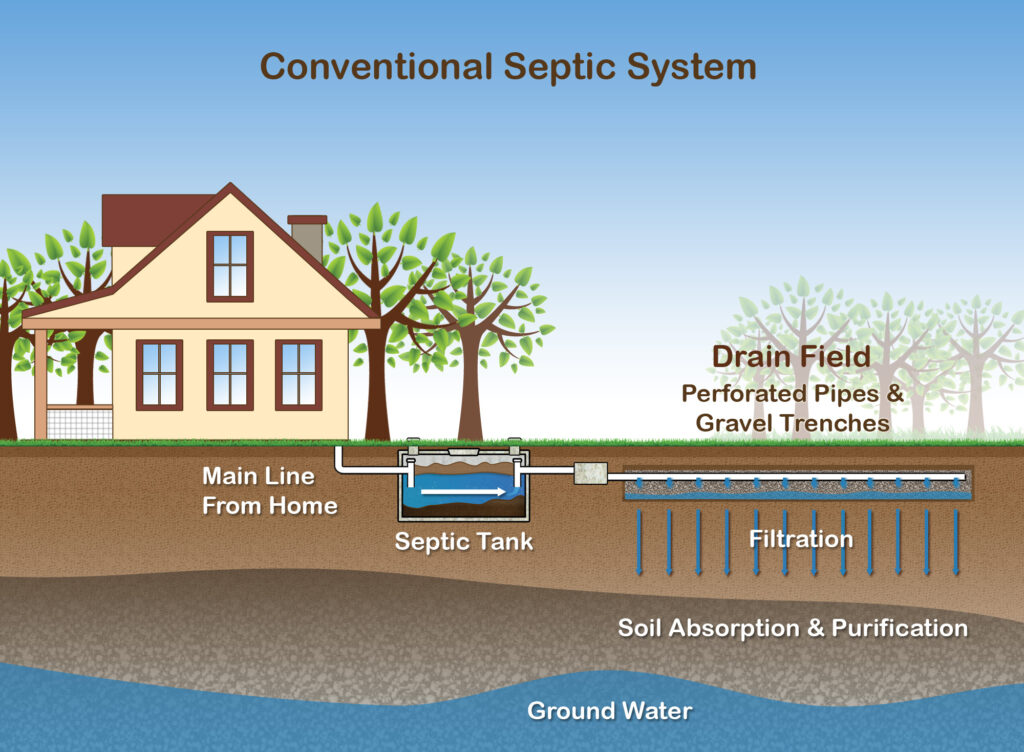
The delicate balance of our ecosystem hinges on various components that allow diverse life forms to coexist harmoniously. Environmental preservation and conservation are imperative for the survival of both humans and wildlife. It necessitates the careful treatment and disposal of pollutants such as water, air, and land waste, ensuring they return to the environment without causing harm.
Well, let’s take a look at a comprehensive analysis of the cost implications associated with two methods of waste disposal: having a septic tank or connecting to a sewer network. The goal is to reduce water pollution resulting from improper waste disposal, exploring the modes of disposal and treatment processes before these wastes are released back into the environment.
A sewer line is essentially an underground pipe or tunnel system designed to transport sewage from residences and commercial buildings, excluding storm-water. Its primary purpose is to convey sewage and industrial waste, typically relying on gravity for the transmission, from homes and industries to treatment plants. Sewerage systems play a pivotal role in creating a healthy living environment by treating wastewater from households and industrial facilities, ensuring that the purified water is safely returned to rivers and oceans. Therefore, understanding the cost implications of connecting to a sewer network versus opting for a septic tank is crucial, depending on the user’s specific needs.
Connecting to a sewer line involves hooking up to an existing grid in the area and applying for the service. In Uganda, the National Water & Sewerage Corporation provides sewerage services through state-of-the-art treatment plants across the country. This network is responsible for transmitting waste material, especially in the central business districts and surrounding areas.
For premises such as schools, industries, and commercial buildings, connecting to the sewer network is often the most cost-effective solution. These settings generate larger volumes of waste, making the frequent emptying of a septic tank impractical and more expensive when compared to connecting to the network.
Conversely, septic tanks are a practical choice for domestic users with fewer occupants. They are more affordable to install and maintain since it typically takes over a decade for them to reach capacity before requiring emptying. Under this system, fecal matter is transported by a cesspool emptier to designated treatment plants for purification before being returned to the local water sources.
Experts in the field recommend considering both options based on specific needs. Premises with higher occupancy rates, such as schools, hospitals, industries, and commercial buildings, are encouraged to opt for sewerage services, as they are not only cost-effective but also easier to manage.
On the other hand, smaller households and settings with fewer inhabitants may find septic tanks a more viable solution. It offers the flexibility of emptying as needed and transporting the waste to sewage treatment plants for purification before releasing it back into the environment through connected channels in nearby wetlands.
Both sewer lines and septic tanks offer cost-effective solutions depending on the unique requirements of the users. The key determinant is the volume of waste produced. For higher waste production, a direct connection to the sewer grid is the more practical choice. Conversely, lower waste production justifies the use of a septic tank with periodic emptying and subsequent purification. Either way, making an informed decision is bound to ensure efficient waste management, and also environmental sustainability.


